European brown rot fungus spore levels are high in tart cherry orchards with carryover inoculum
After examining European brown rot strikes from tart cherry tree samples in Northwest Michigan, extensive sporulation was observed, particularly at the base of dead flowers infected last year. Initiate control sprays at popcorn this year.
European brown rot is a disease of tart cherries caused by the fungus Monilinia laxa. Michigan State University Extension reported general information on the disease on May 1, 2014, in the article “Be ready for European brown rot in tart cherries in 2014.”
The European brown rot fungus overwinters in infected shoot strikes and flowers from the previous season. These strikes could be completely killed by European brown rot (Photo 1), or European brown rot-killed tissue could be present on shoots with live buds (Photo 2).
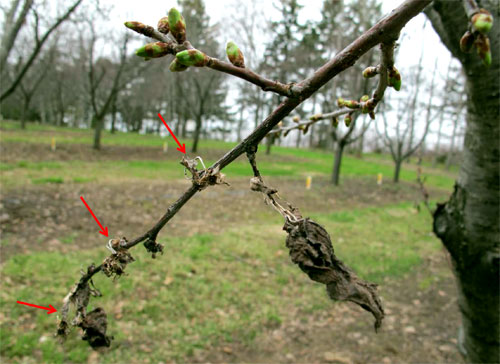
Photo 1. Shoot strike on Montmorency killed by European brown rot highlighting flower tissue with heavy sporulation of the M. laxa fungus.
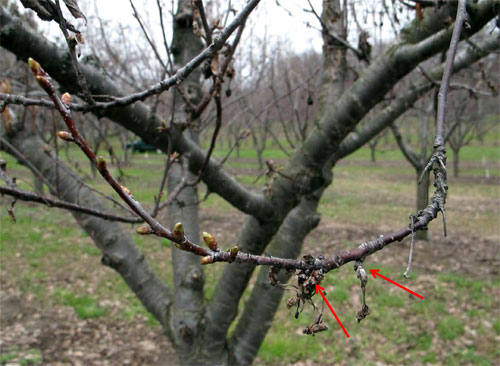
Photo 2. Shoot with buds breaking dormancy and European brown rot-infected flower tissue with heavy sporulation of the M. laxa fungus.
We sampled shoot strikes from Balaton and Montmorency tart cherry trees from the Northwest Michigan Horticultural Research Center on May 5 and brought them to the lab for microscopic observation. Large, easily visible tufts of fungal growth and spores were observed at the base and on pedicels of last season’s infected flower tissue (Photos 3-5). While the trees were just breaking dormancy on May 5 and not susceptible to infection, spore production and release will continue throughout bloom.
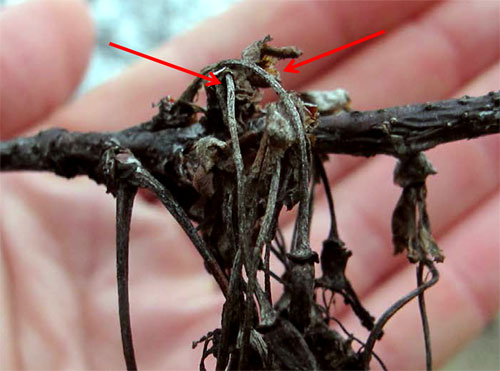
Photo 3. Profuse sporulation of the M. laxa fungus on dead Montmorency flower tissue infected last season.
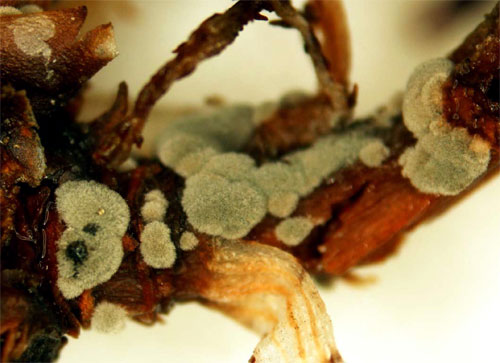
Photo 4. Profuse sporulation of the M. laxa fungus (visible as gray fungal tufts) on dead Montmorency flower tissue infected last season.
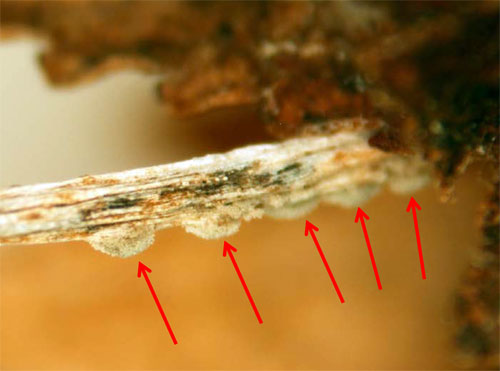
Photo 5. Profuse sporulation of the M. laxa fungus (visible as gray fungal tufts) on dead Montmorency flower pedicels infected last season.
Thus, any orchard blocks containing overwintered European brown rot strikes, and especially shoot strikes with intact dead flower tissue, are at an extreme high risk for European brown rot infection this season. There are enough spores being released from the dead flowers from a single strike to infect all of the flowers on a tree. As we near the popcorn developmental stage, this developing flower tissue will be highly susceptible to European brown rot infection, particularly if cool to cold, wet conditions predominate.
European brown rot infection is favored by colder weather prior to and during bloom (high temperatures in the 30s to 40s) with extended wetting events, or rain followed by at least 18-24 hours with relative humidity above 90 percent. Infection potential is also affected by cultivar; one possible reason for the susceptibility of Balaton is that M. laxa infects Balaton flower tissue more easily and thus does not require as long of a wetting period for infection.
Fungicide sprays targeting European brown rot must be initiated at the white bud stage prior to a rain event. A second application follows usually one week later during bloom. Fungicide application, particularly on Montmorency, can be delayed if we are experiencing prolonged dry weather during bloom. There is currently only one fungicide available with confirmed efficacy against European brown rot and that is Indar 2F, used at a rate of 6 fluid ounces per acre. While there is a Section 24(c) label available allowing the use of up to 12 fluid ounces per acre per Indar application, the lower rate should be used at this time as our current analyses indicate that M. laxa isolates are sensitive to sterol inhibitor fungicides.
Drs. Sundin and Rothwell's work is funded in part by MSU's AgBioResearch.



 Print
Print Email
Email


